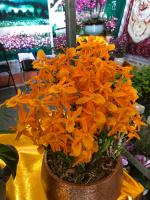Introduction
Have you ever noticed that some roofs are adorned with evergreen trees? This trend has become increasingly popular in recent years, but have you ever wondered why people are planting trees on their roofs? In this article, we will explore the reasons behind this practice.
Aesthetics
One reason why evergreen trees are planted on roofs is for their aesthetic appeal. The green color of the trees provides a vibrant contrast against the gray tones of urban landscapes. This creates a calming and peaceful environment that can be enjoyed by homeowners and passersby alike.
Noise Reduction
Another reason why evergreen trees are planted on roofs is for noise reduction. Trees absorb sound waves, which can be particularly beneficial in urban areas where noise pollution can be a problem. The thick foliage of evergreen trees is particularly efficient at dampening sound, creating a quieter and more peaceful living environment for those in the building.
Environmental Benefits
Aside from aesthetic and noise-reducing benefits, evergreen trees planted on roofs also have environmental benefits. Trees absorb carbon dioxide and release oxygen, making them valuable for reducing greenhouse gas emissions. They also help to mitigate the urban heat island effect, reducing heat in densely populated areas.
Roof Protection
Evergreen trees can also be beneficial for protecting roofs. The thick foliage can provide insulation, reducing heat loss in cold weather and keeping the building cool in the summer. The trees can also protect the roof from harmful UV rays and weather damage, extending the life of the roof by several years. In addition, the trees can also absorb rainwater, reducing runoff and protecting the building's foundation.
Challenges
While evergreen trees planted on roofs can provide numerous benefits, they also come with several challenges. Proper care and maintenance are necessary to ensure the health and stability of the trees, as well as to prevent damage to the roof. In addition, the added weight and water absorption of the trees can also affect the structural integrity of the building, requiring careful planning and consultation with a structural engineer.
Conclusion
In conclusion, evergreen trees are becoming a popular trend for those looking to enhance their rooftops. They provide aesthetic appeal, reduce noise pollution, offer environmental benefits, and can protect the roof. However, they also come with challenges that require proper care, maintenance, and consultation with experts. Ultimately, the benefits of planting evergreen trees on roofs make it a worthwhile investment for those looking to create a more sustainable and harmonious living environment.

 how many times do yo...
how many times do yo... how many planted tre...
how many planted tre... how many pine trees ...
how many pine trees ... how many pecan trees...
how many pecan trees... how many plants comp...
how many plants comp... how many plants can ...
how many plants can ... how many plants and ...
how many plants and ... how many pepper plan...
how many pepper plan...































